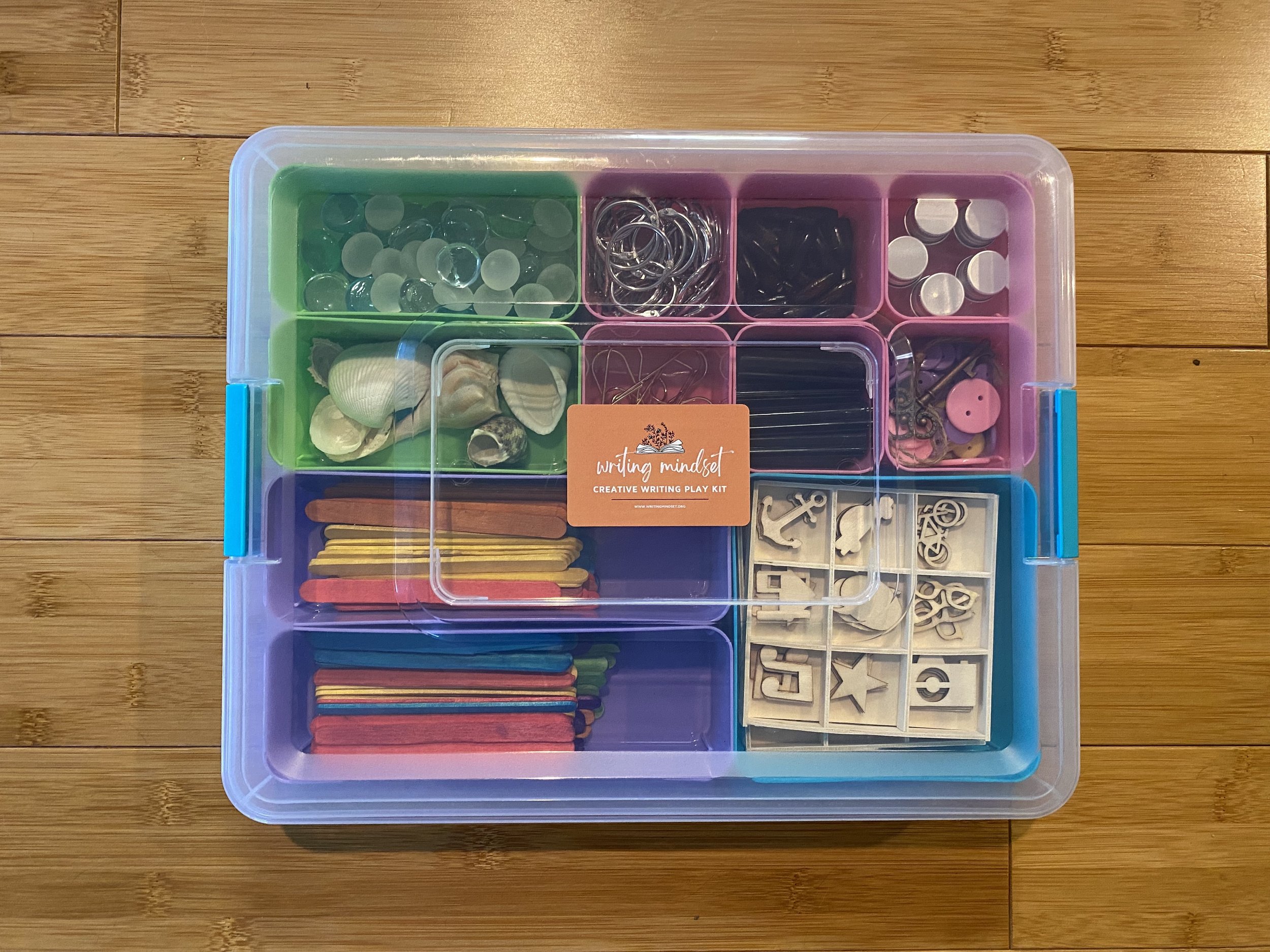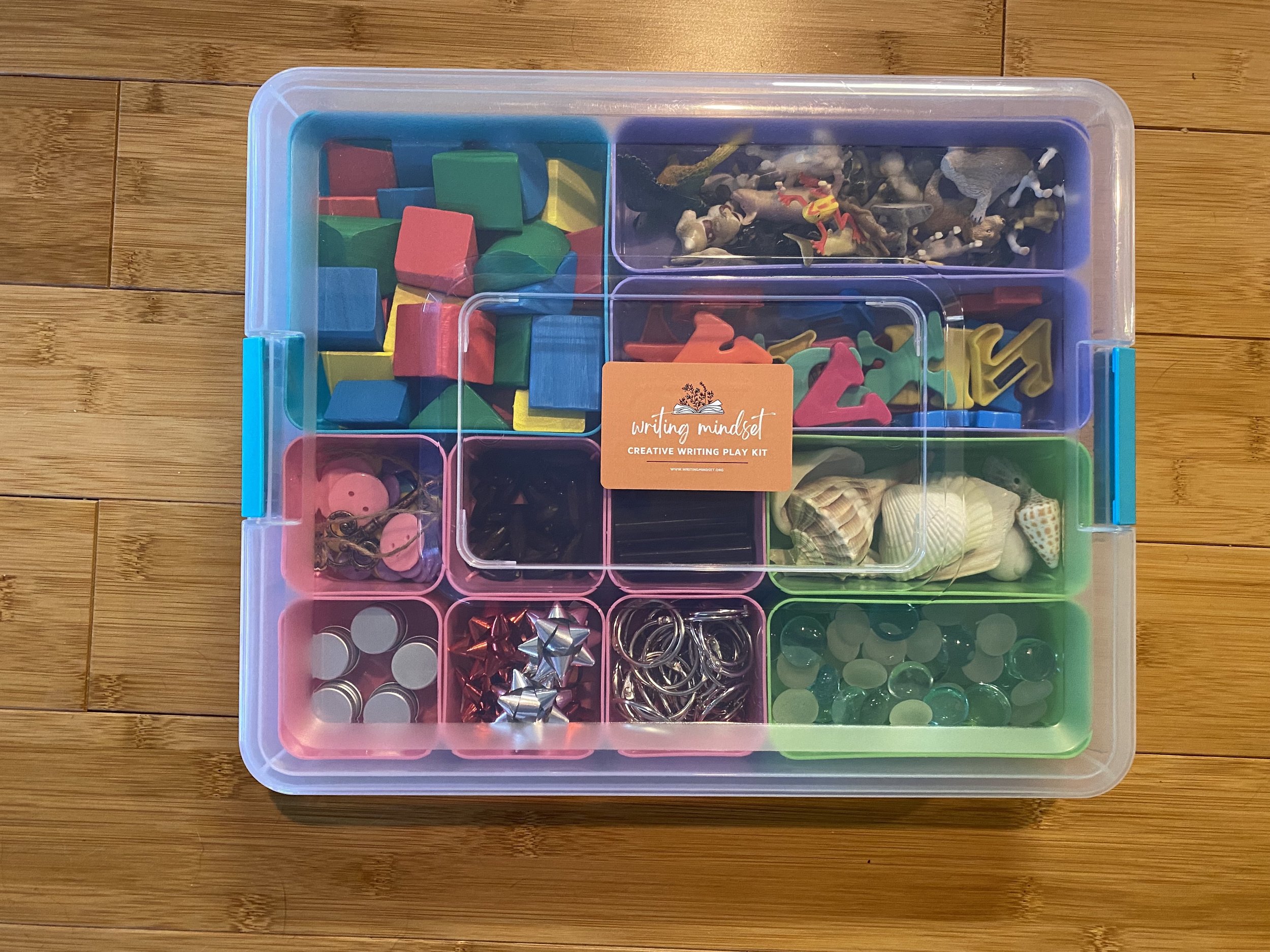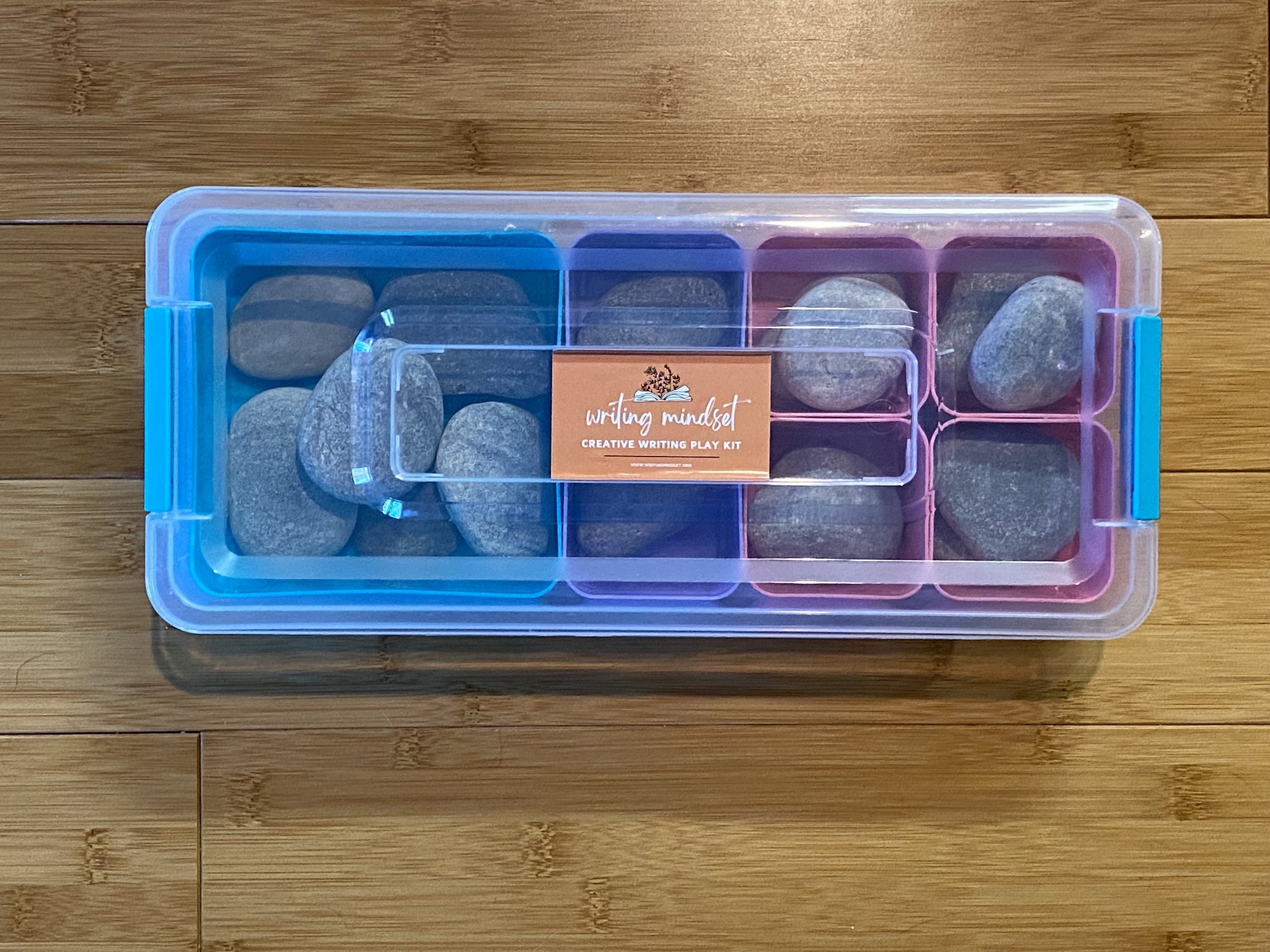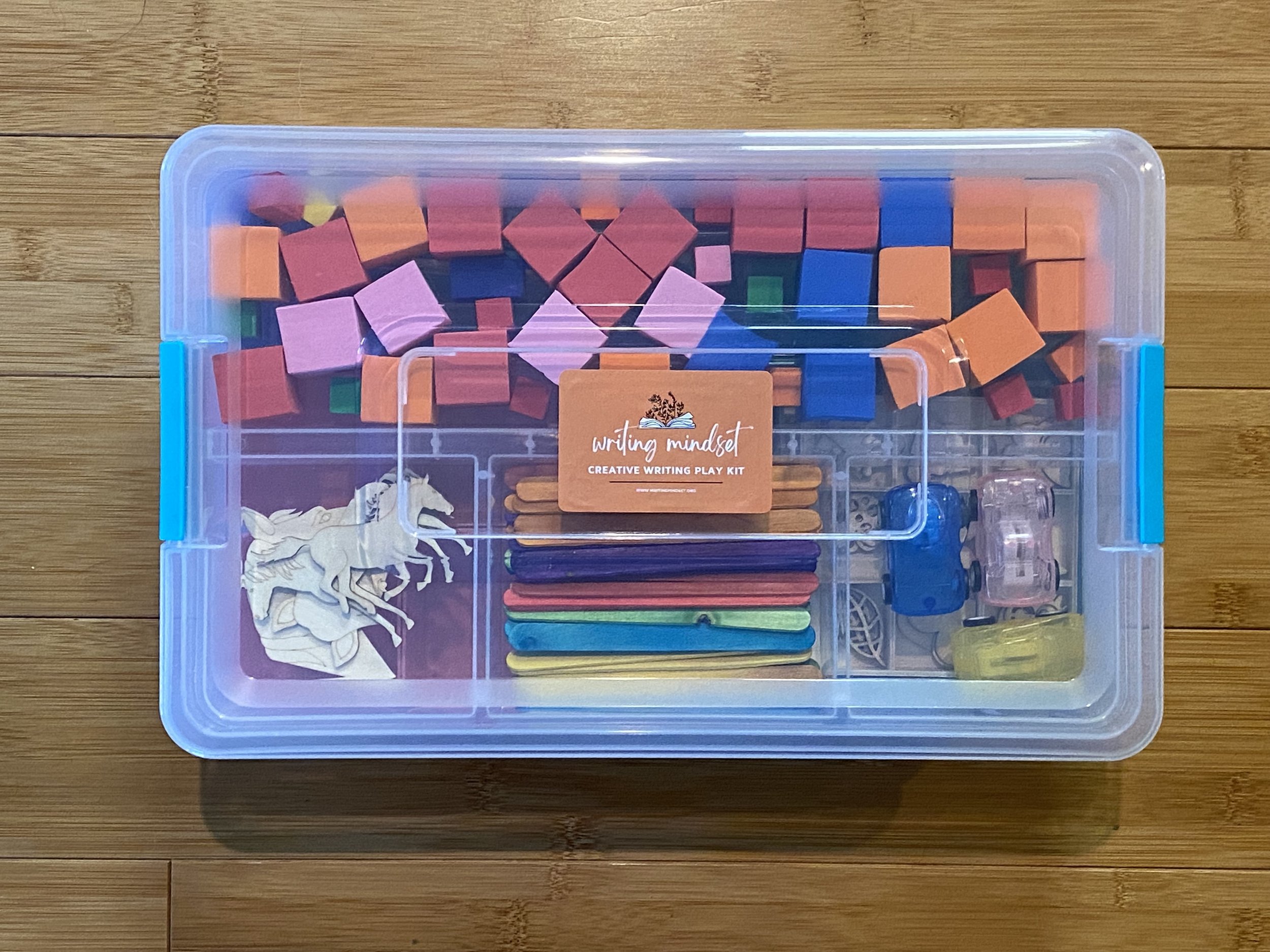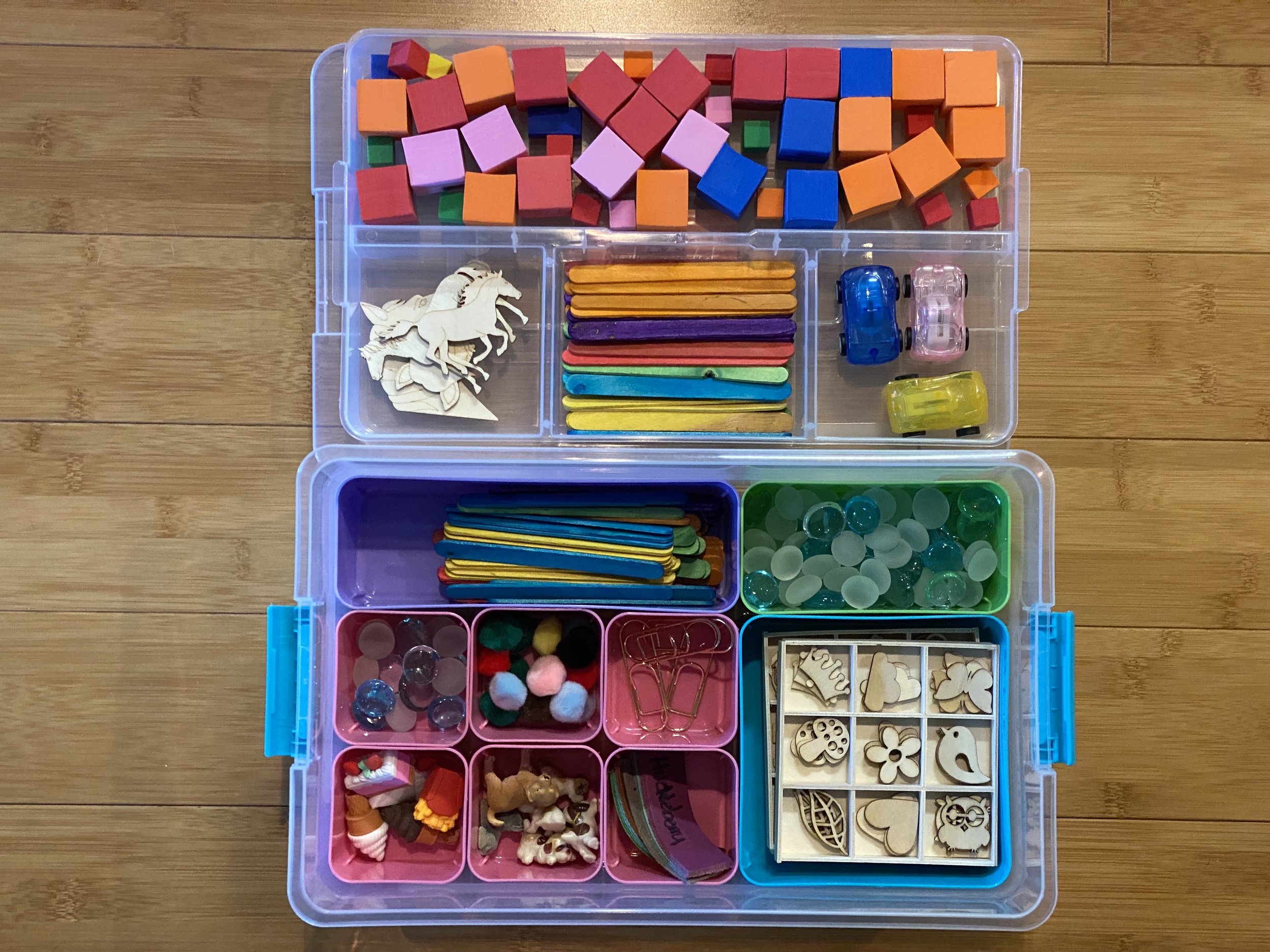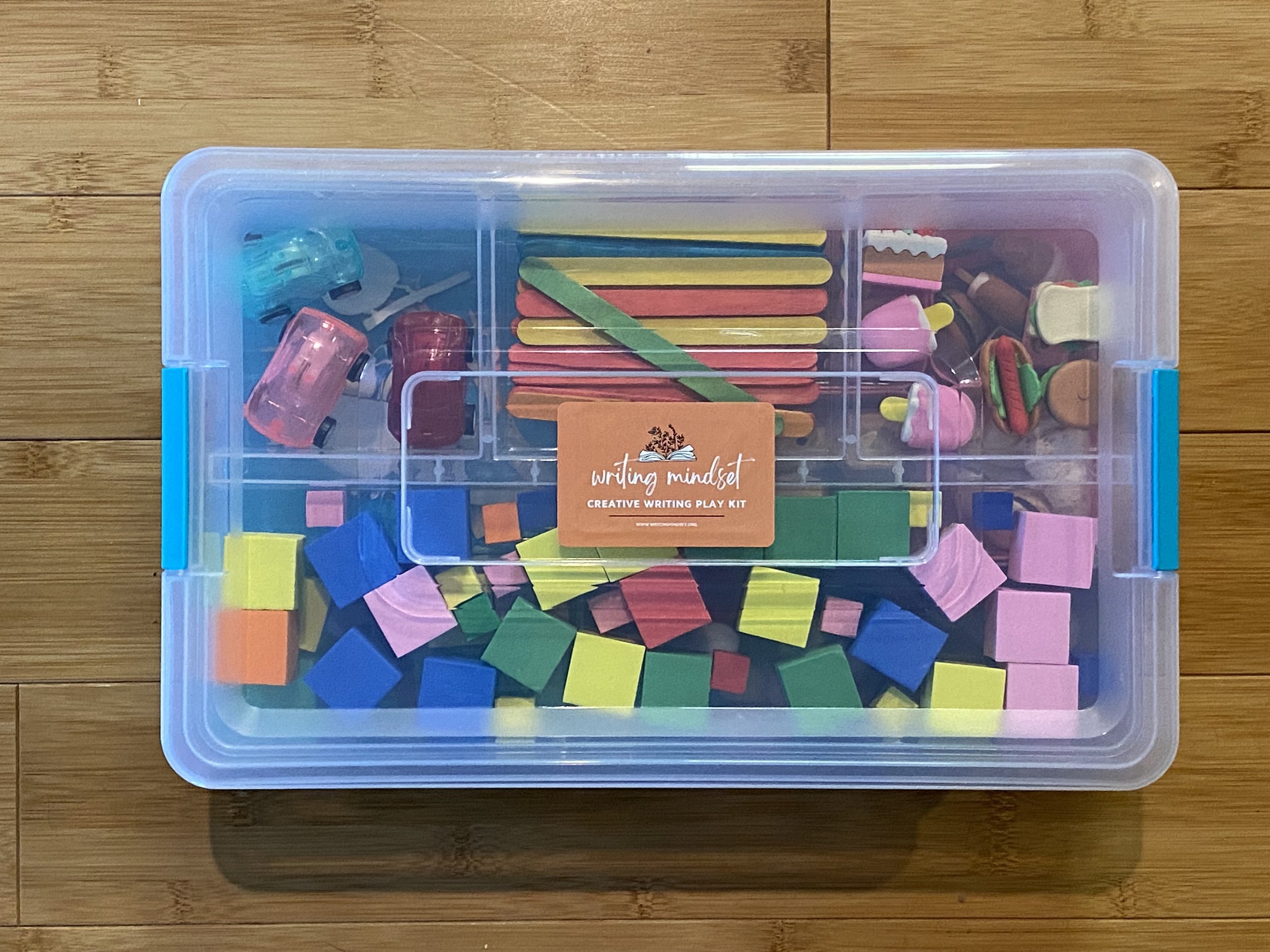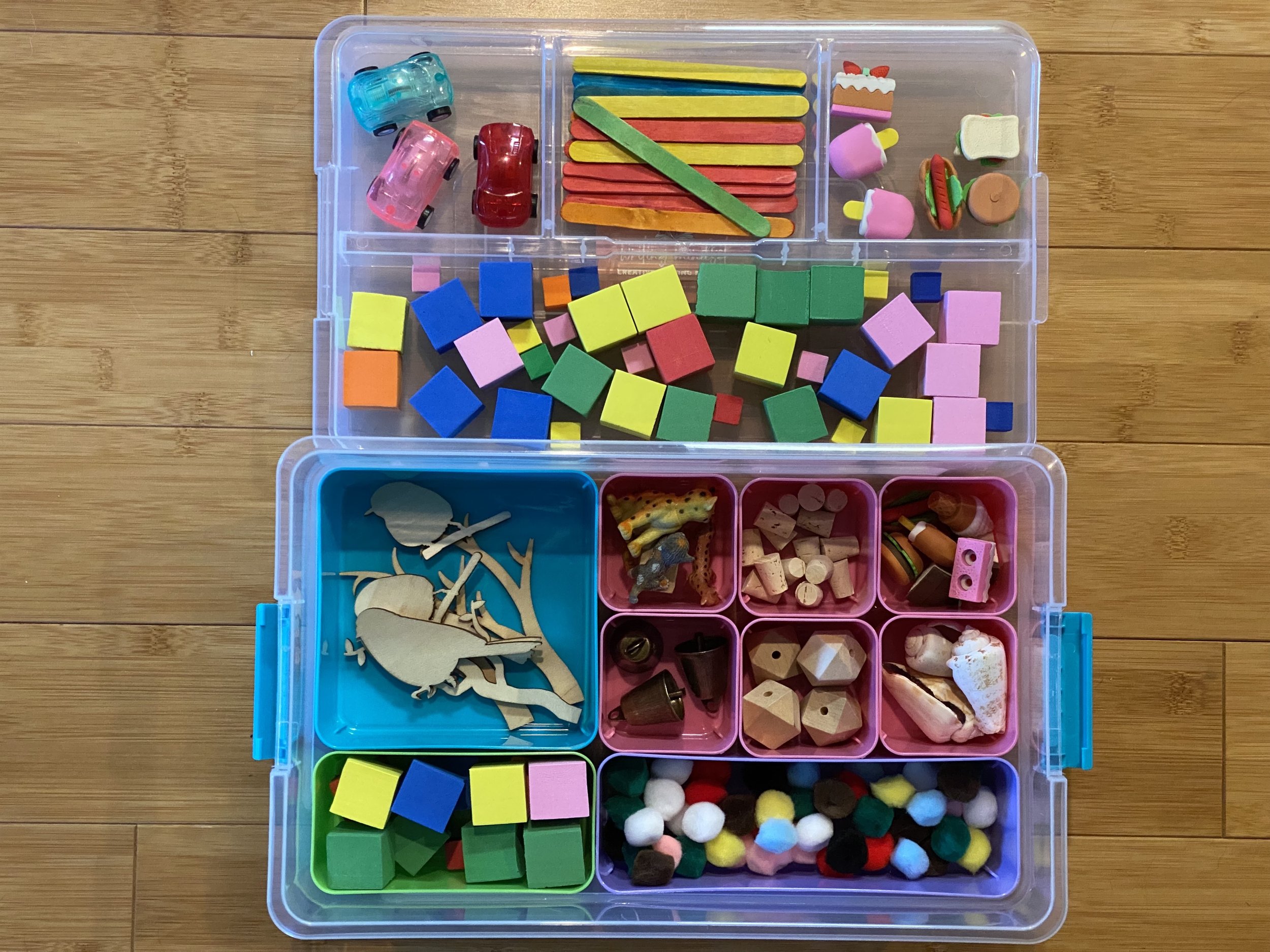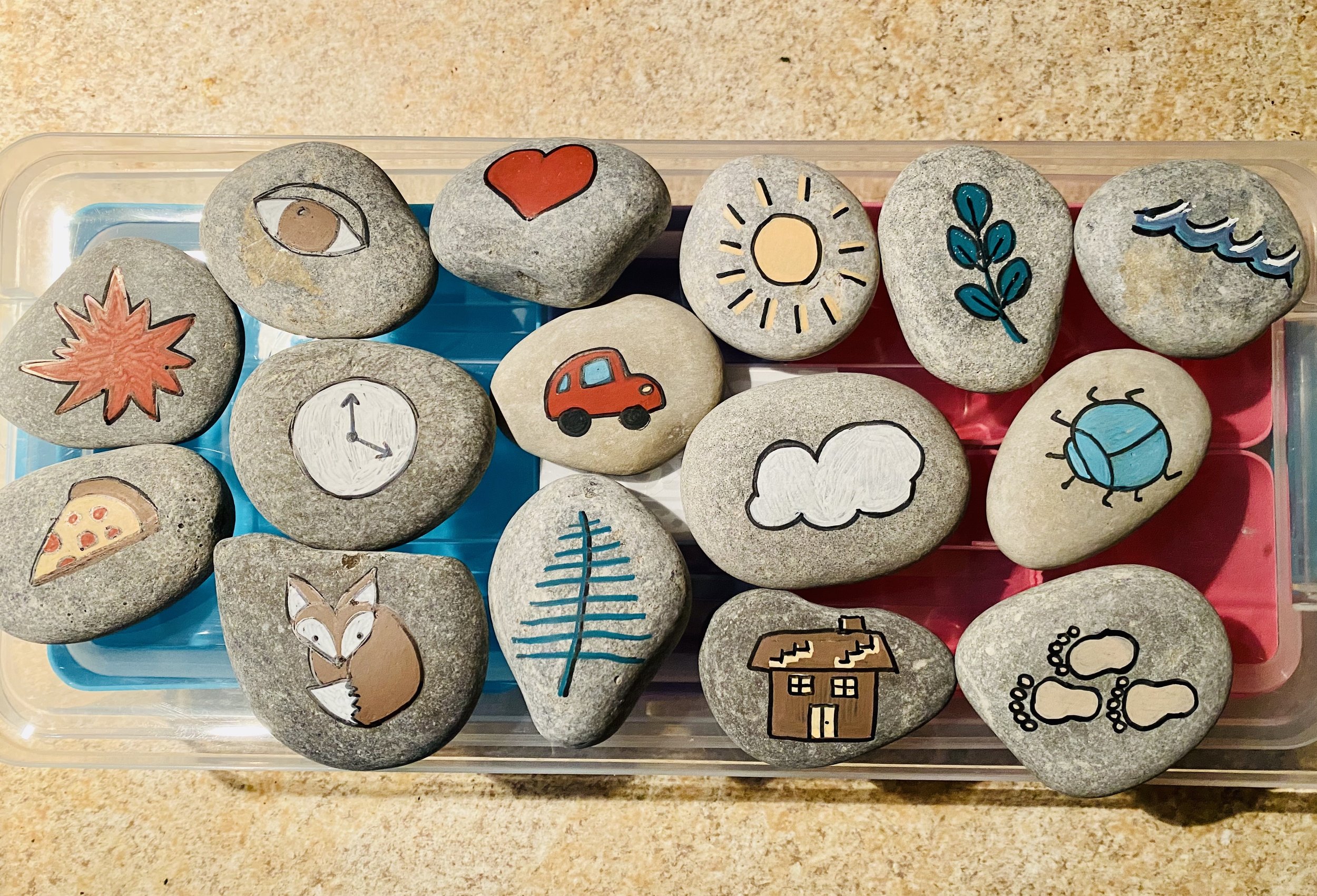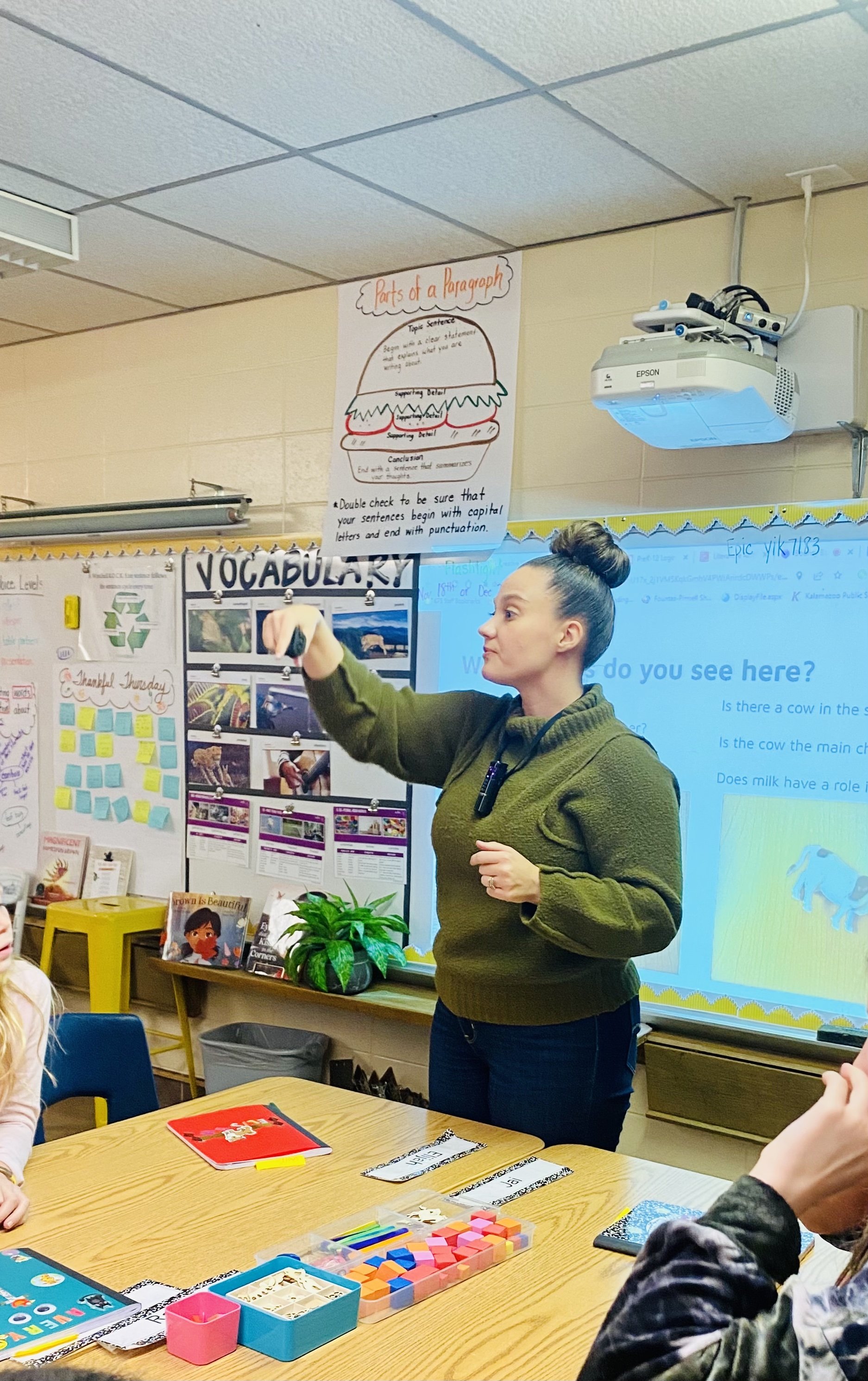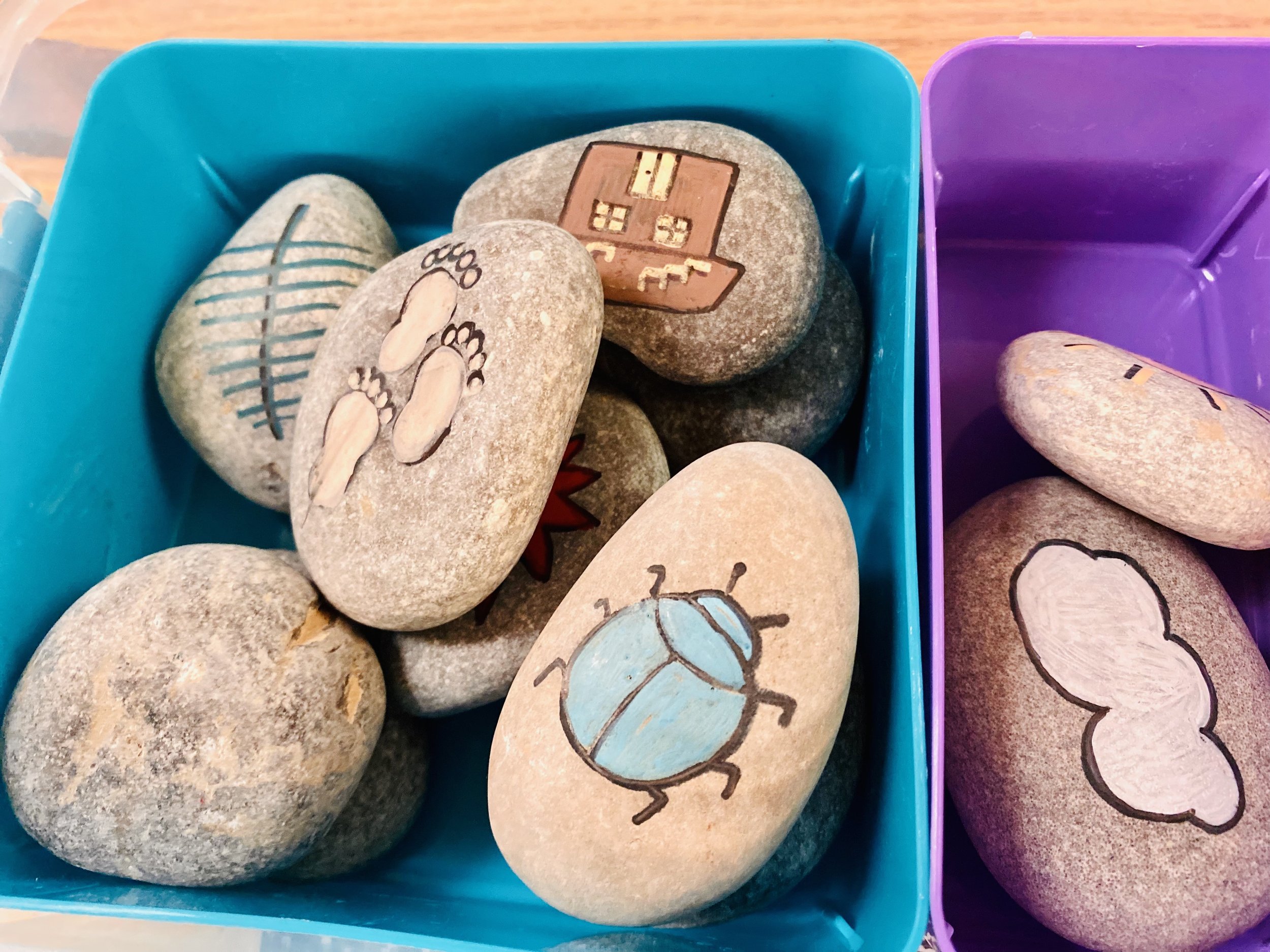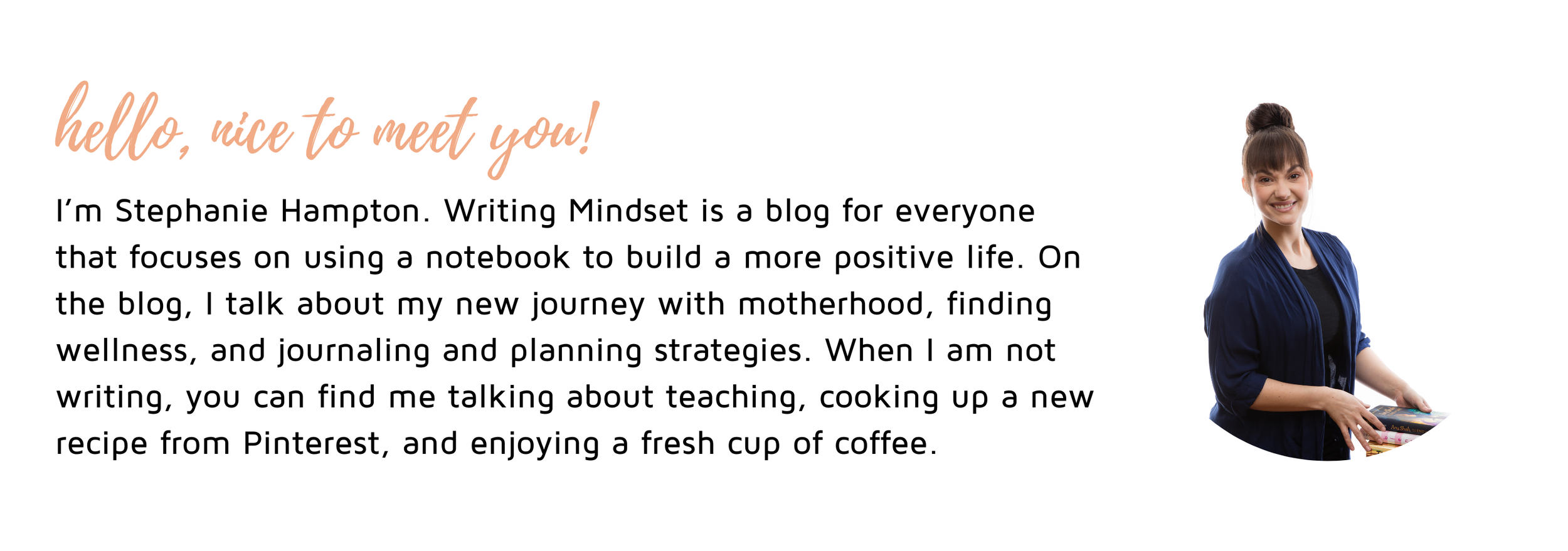The Power of Play: Find Story Ideas Everywhere with Creative Writing Play Kits
Use Creative Writing to Teach Inquiry and Question-Asking with Everyday Objects
Dedicated to my friend, Mrs. Roberts. You keep me inspired. I hope to be a wrinkly writing grandma creating stories alongside you and some kids in the future.
Teaching inspiration often comes in cycles, especially for literacy teachers. We get excited about a reading project, and then figure out a workshop for writing that just works. We create a project for kids that gets them moving, and then come up with the perfect book-tasting setup that makes them want to read more. We hone in on the aspects of teaching that keep us going when it gets rough. Sometimes we know inspiration fades away during periods of burnout. This project with writing got my creative flow turned on again to want to research, put together, and create a lesson and activity for kids. Creative writing play kits are loose part containers that show kids how to find story ideas in everyday surroundings. They could be used for a variety of things, and you could easily create them with things you find at the Target dollar spot, local craft store, or even things around the house. Many of the things were items that my two-year-old can’t play with just yet because they were too small. This post is an outline of creative writing play kits: What they are, how to use them, and how to get inspired by putting them in front of kids.
Project Inspiration & Research
This project was inspired by Pernille Ripp’s post “Updated: Using Oral Storytelling Kits/Loose Parts with Middle Schoolers” because I got intrigued by her tote boxes of objects that she was using to teach oral storytelling. Really, these objects can be used to help kids find any type of story idea-no matter the genre. This is the same practice that we use when we teach kids to go on “storytelling walks” or think about their lived experiences when they are writing narratives. The same concepts apply because they are able to think about an object or something they encounter in their everyday lives, and then apply it to an imaginative lens.
It is also easy to go down the rabbit hole of research when it comes to Montessori play, loose parts, and the power of play at any level. Secondary teachers are often strangers to play. We don’t have recess, we don’t often have “time” for fun activities, and we don’t get to play around with things that aren’t technology-based all too often. It needs to change. Becoming a mother has shown me that one of the greatest lessons I can show my daughter is how to play, laugh, and see the world in a variety of ways. Why would I stop doing that in a classroom? Why don’t older kids need this same nurturing for play that younger ones do? I love the book “Play Attention! A Playful Mindset Meets Academic Content” by Stephanie Parsons because she supplies a ton of the research behind letting kids play and the benefits of play across content areas.
Here are some quick facts from her book, and some thoughts I had while reading the text:
“Playful experiences like these create pathways in the brain that enable us to consider more readily unusual, inventive, creative, resourceful ways of doing the things we need to do” (3).
A causative link between less play and more psychopathology (4).
Why BLUEY is playing games nonstop
Why kids love Friday Free Write and beg for this type of lesson year after year
Skills: self-regulation, intrinsic motivation, cooperation and collaboration, abstract reasoning, resilience, joy, courage, risk-taking, flexibility, and creativity
Lesson Sequence & Presentation
Read Aloud
Overview of the Kits
You can easily find affordable containers at a local craft store or at the Dollar Store. I started collecting the loose parts on trips to the store and whenever I would find something around the house. One of my favorite elements in the containers is pen caps from pens that have dried out, but the caps still click together.
Demo Lesson & Reflections
I got a chance to hang out with a 4th-grade class here in Kalamazoo, MI. They were more than ready to experiment with finding story ideas! After a quick welcome, we got right to it.
The sequence of the lesson:
Welcome!
Read Aloud
What are Play Kits?
How do we use them?
What are the “play nice” rules?
Setting up writer’s notebooks into 4 areas for 4 objects (Each object is timed for 2-3 minutes)
Gather story ideas with objects
Drafting of a favorite story idea
Even though I linked some of the research to the slides for the presentation, kids aren’t necessarily in need of hearing why they should be playing. They know they want to play. I skipped over the research slides to get to the kits.
For ease of directions, we had students work in their writer’s notebooks. They split the pages up into 4 sections and then placed the object in that section to ask their questions. For example, if they had a blue puffball as their chosen object, they could have asked:
Are clouds in my story?
Is there a blue furry animal in my story?
Does someone break out in blue spots?
Are there a blue bush and flowers outside of the house?
All of these are story ideas inspired by one of the objects. The goal is to get kids to see they can see stories everywhere in everything. Everyday objects can come to life with imagination.
Kids were hesitant to use the story stones at first. They wanted to make their own, but it was a bit harder to come up with questions. I used a favorite story planner of mine for inspiration for these where you can teach kids to start stories “outside in” or “inside out.”
My favorite story idea from the day came from one of the stones. A young writer told me that the stone with water on it was a rock that held the entire ocean.
While watching the kids work with the objects, it was interesting to see which ones they went to grab and which ones remained in the bins. The favorite ones among young writers were the ones that resembled toys or familiar objects they would already know: Cars, erasers, blocks, etc.
We encouraged kids to pre-write in their own way. This young writer wanted to draw story ideas.
One of the best parts of the day was about 3 minutes into writing. The room had that familiar “hum” or ideas and stories being created. It is hard to explain this moment if you aren’t a teacher. Silence often comes from compliance, but true calm from being inspired is what we are going for as teachers. Pencils were moving, and kids wanted to share their ideas with the entire room.



